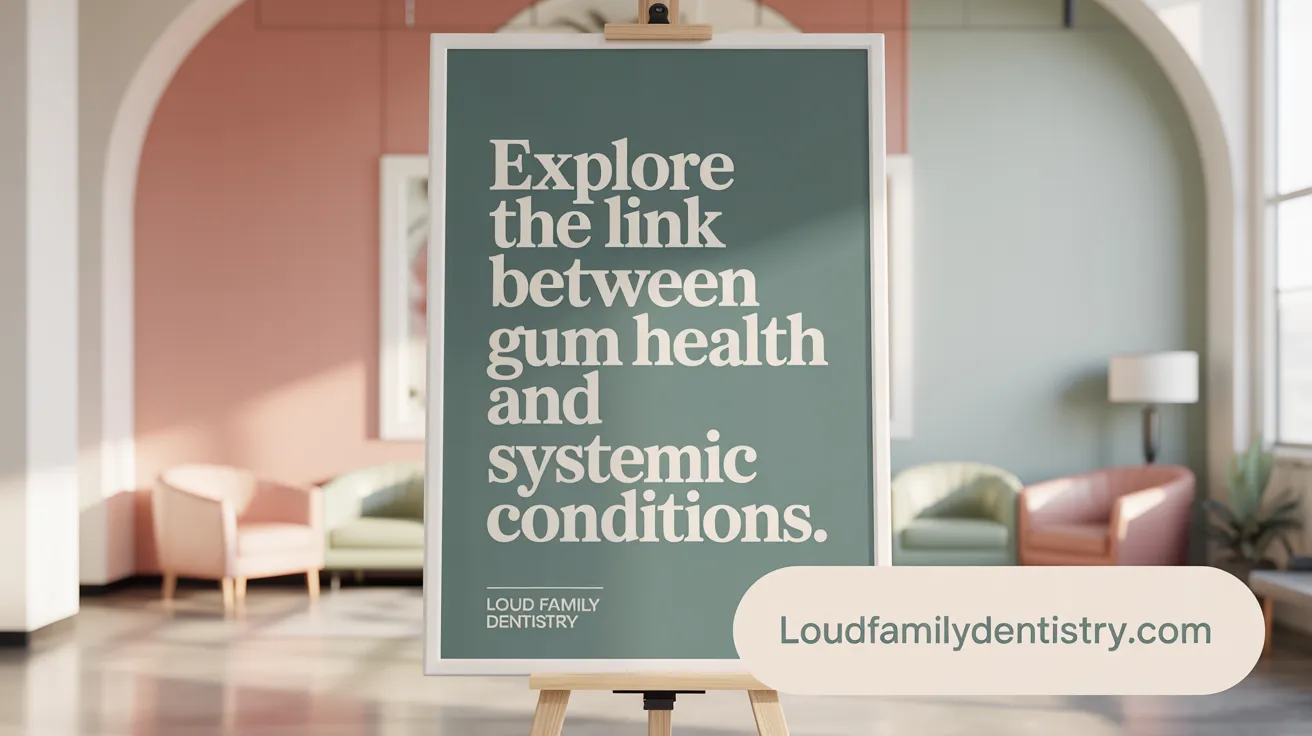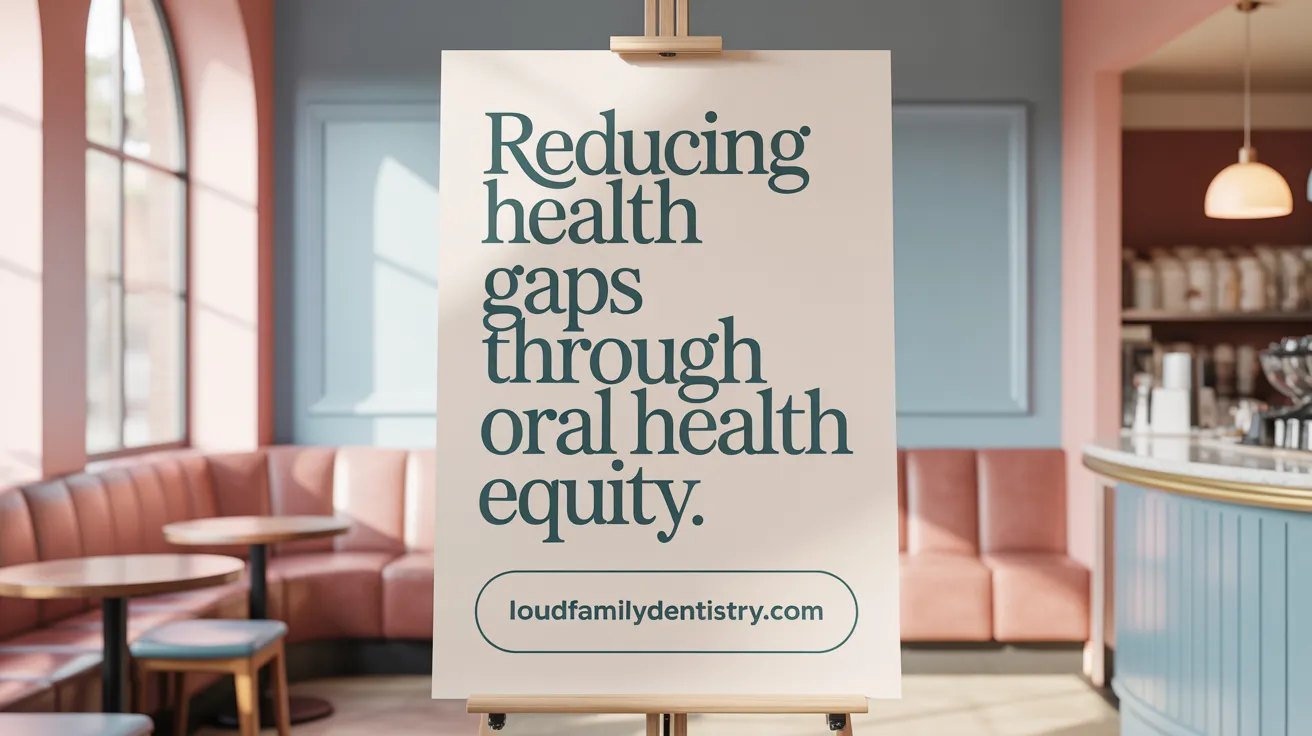Understanding the Vital Connection Between Mouth and Body
Oral health is much more than a bright smile; it is a crucial pillar of overall wellness that affects and reflects the health of the entire body. From childhood to old age, the condition of our teeth, gums, and supporting oral structures plays a significant role in systemic health, influencing diseases such as diabetes, cardiovascular disease, and even Alzheimer's. This article explores the scientific and social dimensions of the intricate relationship between oral health and overall well-being, underscoring why caring for the mouth is integral to living a healthy life.
The Fundamental Relationship Between Oral Health and Overall Wellness
What is the relationship between oral health and overall wellness?
Oral health is deeply connected to overall wellness, affecting both individual health and quality of life. When oral health is compromised, it can lead to pain, infections, and difficulties in speaking, smiling, and eating, which in turn influence emotional and social well-being.
Beyond local issues, oral health impacts systemic health. Conditions like gum disease and dental decay are linked to serious health problems such as heart disease, diabetes, Alzheimer’s, and respiratory infections. These associations often occur through mechanisms involving chronic inflammation, bacteria entering the bloodstream, and immune system responses.
The microorganisms in the mouth, including bacteria and viruses, can influence overall health. For example, bacteria from periodontal infections can travel to the heart, causing endocarditis, or to the lungs, leading to pneumonia. Inflammation from gum disease may also contribute to atherosclerosis (hardening of the arteries).
Systemic diseases can exacerbate oral health problems; for instance, diabetes increases susceptibility to gum infections and complicates their treatment. Aging further affects oral health by reducing saliva flow, diminishing immune responses, and increasing the risk of tooth loss and oral cancers.
Promoting good oral hygiene—regular brushing, flossing, dental visits, and healthy eating—can reduce the risk of developing both oral and systemic conditions. An integrated healthcare approach that involves both medical and dental professionals is vital to detect, prevent, and treat health issues early, thereby improving overall wellness.
Maintaining oral health becomes an essential part of holistic health strategies, emphasizing its role in preventing chronic diseases and enhancing life quality.
| Aspect | Impact | Additional Notes |
|---|---|---|
| Oral Hygiene | Prevents infection, reduces inflammation | Brushing, flossing, regular checkups |
| Bacterial Spread | Links to cardiovascular and respiratory diseases | Bacteria enter bloodstream or are inhaled |
| Chronic Inflammation | Contributes to atherosclerosis, diabetes | Inflammation from gums affects other tissues |
| Systemic Diseases | Worsens oral conditions; worsened by poor health | Examples include diabetes, Alzheimer’s |
| Aging | Increases vulnerability to oral diseases | Reduced saliva, immune changes |
This interconnectedness underscores the importance of maintaining good oral health not only for dental reasons but also as a crucial component of overall health and disease prevention.
How Poor Oral Hygiene Impacts Diabetes and Alzheimer’s Disease

How does poor oral hygiene impact systemic conditions like diabetes and Alzheimer's disease?
Research increasingly shows a strong correlation between oral health and major systemic diseases such as diabetes and Alzheimer's. When oral hygiene is neglected, bacteria and inflammation from periodontal disease can enter the bloodstream, triggering widespread systemic effects.
Periodontal disease, characterized by gum infection and inflammation, can contribute to overall systemic inflammation. This chronic inflammation is a significant factor in the development and worsening of insulin resistance, making diabetes harder to control. Conversely, poor glycemic control in diabetes can increase tissue destruction in the gums, creating a vicious cycle.
Moreover, emerging scientific evidence points to the role of oral bacteria in neurodegeneration. Studies have identified periodontal bacteria in the brains of individuals with Alzheimer’s disease. This bacterial presence can induce neuroinflammation, contribute to plaque formation, and accelerate neuronal damage. Research at institutions like UIC College of Dentistry suggests that exposure to periodontal bacteria can lead to neuroinflammation and neurodegeneration in animal models, similar to processes observed in human Alzheimer's.
Poor oral health also affects nutrition and cognitive function. Tooth loss and gum disease impair mastication, limiting the ability to chew food properly. This can lead to poor nutrition, which negatively impacts cognitive abilities, especially in older adults.
These findings underscore the importance of good oral hygiene, including regular brushing, flossing, and dental check-ups. By maintaining oral health, individuals may reduce systemic inflammation and bacterial invasion that are linked to both diabetes complications and Alzheimer’s progression.
| Aspect | Effect | Consequence |
|---|---|---|
| Systemic inflammation | Triggers widespread inflammatory response | Worsens insulin resistance, promoting diabetes |
| Bacterial spread | Invades bloodstream and brain | Contributes to neuroinflammation, neurodegeneration |
| Nutrition | Impaired mastication | Leads to poor diet, affecting cognitive health |
| Research evidence | Bacteria found in Alzheimer’s brains | Supports bacteria-driven neurodegeneration |
Addressing oral health thus offers a promising approach to reducing risks associated with these systemic diseases, emphasizing the need for integrated healthcare strategies.
The Critical Role of Dental Care in Sustaining Overall Well-Being
Why is dental care important for maintaining overall health and well-being?
Dental care is a vital component of overall health because the health of the mouth reflects and influences broader bodily conditions. Proper oral hygiene, including brushing, flossing, and regular check-ups, helps prevent common yet preventable diseases such as cavities and periodontal disease.
Poor oral health doesn't just cause discomfort or damage to teeth; it can also lead to systemic infections. Bacteria from gum disease can enter the bloodstream, increasing the risk of cardiovascular issues, endocarditis, and complications during pregnancy such as premature birth and low birth weight.
The mouth plays a central role in functions like speaking, tasting, chewing, and swallowing. When oral health deteriorates, these basic functions can be impaired, impacting social interactions, nutrition, and mental health.
Moreover, maintaining good oral health is crucial for managing chronic illnesses like diabetes and HIV/AIDS. For instance, gum disease can make blood sugar levels harder to control, worsening diabetes outcomes.
Regular dental visits and patient education about preventive care are crucial strategies. They help catch early signs of oral and systemic disease, reduce healthcare costs, and improve quality of life.
Ultimately, protecting oral health supports overall well-being by preventing pain, enhancing nutrition, facilitating effective communication, and reducing the risk of more serious health issues.
Oral Health as an Indicator and Early Warning System for Systemic Diseases

How can the oral cavity serve as a diagnostic site for systemic diseases?
The mouth is more than just a place for eating and speaking. It can act as an early warning system for a range of health issues beyond oral health itself. Medical professionals and dentists recognize that changes in oral tissues can signal underlying systemic conditions. For example, specific oral symptoms like painful sores, unusual lumps, or gum abnormalities may be early signs of diseases such as HIV/AIDS or certain cancers.
Because the mouth provides direct access to tissues connected to the rest of the body, it often reflects the health status of internal organs. This makes it an invaluable site for early detection, often before symptoms develop elsewhere in the body.
What role does saliva testing play in monitoring chronic conditions and infections?
Saliva testing has become an innovative, non-invasive approach to monitor health. Saliva contains biomarkers—molecules that indicate the presence of certain diseases or infections. Through saliva analysis, healthcare providers can identify markers associated with chronic illnesses like diabetes, or detect infections such as HIV and hepatitis.
This method allows for easy, quick screening outside of traditional clinical settings, facilitating early intervention. Regular saliva testing can help monitor disease progression or response to treatment, making it a valuable tool in preventive health.
How can signs of HIV/AIDS and cancers be identified in the mouth?
Oral symptoms can often be among the first signs of HIV/AIDS, featuring painful ulcers, mouth sores, or persistent yeast infections. Similarly, oral cancers may present as ulcers, red or white patches, or lumps that do not heal over time.
Detecting these signs early is crucial for effective treatment. Dental professionals trained to recognize suspicious lesions can facilitate prompt diagnosis and referral to specialists, significantly improving outcomes.
Why is early detection of oral cancers so vital?
Oral cancers are often diagnosed late, which can lead to poorer survival rates. Early detection raises the chances of successful treatment and can prevent the cancer from spreading.
Routine dental examinations play a vital role in spotting early signs of oral cancer. Visual and tactile examinations by dental professionals help identify abnormal tissue changes early, facilitating timely biopsy and treatment.
How do oral health professionals contribute to systemic disease monitoring?
Oral health professionals act as frontline detectors of systemic health issues. They screen for signs of systemic diseases during routine check-ups, educate patients on risk factors, and coordinate care with other health providers.
By maintaining good oral health and undergoing regular dental visits, patients can benefit from early detection of health problems, which can lead to improved overall health outcomes.
| Aspect | Diagnostic Focus | How It Contributes |
|---|---|---|
| Oral cavity as diagnostic site | Detects signs of systemic disease | Mouth reflects overall health status |
| Saliva testing | Identifies biomarkers | Non-invasive, easy monitoring of chronic conditions |
| Signs of infections and cancers | Detects sores, patches, lumps | Early diagnosis improves prognosis |
The Societal and Economic Impact of Oral Health on Wellness

What are the broader social and economic implications of oral health on general wellness?
Oral health plays a crucial role in overall well-being by influencing physical health, mental health, and social participation. When oral health is poor, individuals often face pain, discomfort, and social embarrassment, which can lead to social withdrawal and decreased confidence.
Economically, poor oral health leads to higher healthcare costs due to increased visits to emergency rooms, dental treatments, and management of systemic health conditions linked to oral disease. Globally, billions are spent on treating oral diseases, which also result in lost productivity due to absenteeism and reduced work performance.
Disparities in dental care access exacerbate health inequalities. Marginalized populations, such as low-income groups, racial minorities, and the elderly, often lack sufficient access to preventive and restorative dental services. This gap leads to untreated conditions that worsen overall health and social standing.
Addressing social determinants such as income, education, and neighborhood conditions is vital to reducing disparities. Public health policies that promote preventive care, like community water fluoridation and school-based dental programs, have demonstrated effectiveness in lowering the burden of oral disease.
Investing in oral health can yield significant returns by reducing healthcare expenditures, improving workforce productivity, and fostering social inclusion.
Through coordinated efforts that combine policy reforms, community interventions, and education, societies can improve oral health outcomes, decrease economic burdens, and promote a more equitable environment for social participation and health.
Summary Table:
| Aspect | Impact | Strategies |
|---|---|---|
| Economic costs | Increased healthcare spending, productivity loss | Preventive care, insurance coverage |
| Workforce participation | Absenteeism and reduced productivity | Workplace dental health programs |
| Social disparities | Higher disease burden among disadvantaged groups | Policy reforms, community outreach |
| Social determinants | Influence of income, education, environment | Addressing social factors, community policies |
| Public health approaches | Reducing disparities and improving access | Water fluoridation, school programs, workforce expansion |
Overall, strengthening oral health systems and policies promotes better health outcomes, economic efficiency, and social equity, benefiting society as a whole.
Advancing Oral Health Equity and Integration for Holistic Wellness
Why is there a need for a diverse, skilled oral health workforce?
A well-prepared and culturally competent oral health workforce is essential to address disparities in oral health outcomes across different populations. With elevated needs among socially disadvantaged groups, including children in poverty, racial minorities, and frail elderly, expanding the workforce with diverse backgrounds and skills can help reduce access barriers. Training programs designed to include dental therapists and community health workers can improve service delivery, especially in underserved areas.
How can we improve the integration of dental and medical care services?
Integrating oral health into general health care enhances early detection, preventive care, and treatment. Collaborative models that incorporate dental screenings within primary care settings can identify issues like periodontal disease and early signs of systemic conditions such as diabetes or cardiovascular problems. Such integration supports holistic healthcare, encourages communication among providers, and improves patient outcomes.
What innovative approaches are being used to improve access and quality of care?
Technologies like teledentistry enable remote consultation, triage, and education, making dental care more accessible, particularly in rural or resource-limited settings. Community-based programs, school oral health initiatives, and mobile clinics expand reach to vulnerable populations. Workforce innovations, including training paraprofessionals and expanding scope of practice, are vital strategies to address provider shortages.
How are health literacy and emergency preparedness important for oral health?
Educating individuals about preventive practices such as proper brushing, flossing, and regular dental visits promotes better oral health behaviors. Improving health literacy enables populations to make informed choices, reducing the risk of disease. Emergency preparedness, especially highlighted during the COVID-19 pandemic, ensures continuity of care and access to essential oral health services during crises.
What are global and national strategies targeting oral health disparities?
The World Health Organization leads efforts to promote equitable access through policies like the Global Strategy on Oral Health aiming for universal health coverage by 2030. National initiatives focus on expanding insurance coverage, implementing water fluoridation, and strengthening community programs. Policy reforms addressing social determinants—such as income, education, and housing—are crucial to reducing disparities and improving overall oral health.
| Aspect | Strategies | Expected Impact |
|---|---|---|
| Workforce development | Expand training, diversify members | Better access in underserved areas |
| Service integration | Embed dental screenings in primary care | Early detection of systemic diseases |
| Innovation | Use teledentistry, mobile clinics | Reach vulnerable populations |
| Education | Improve health literacy | Promote preventive behaviors |
| Policy | Enact social and economic reforms | Reduce disparities |
Addressing these interconnected factors through strategic efforts can foster a healthier, more equitable society where oral health contributes meaningfully to overall well-being.
Oral Health: A Cornerstone of Total Health and Wellness
The multifaceted connection between oral health and overall wellness is undeniable and deeply significant. Good oral health is pivotal not only for preventing local diseases and maintaining functional abilities like eating and speaking but also for reducing risks associated with chronic systemic illnesses such as diabetes, cardiovascular disease, and Alzheimer's. Dental care serves as a frontline defense in this broader healthcare landscape, underscoring the value of regular preventive care. Moreover, addressing social and economic disparities and advancing integrated care models are critical steps toward ensuring that the benefits of oral health contribute equitably to population wellness. Ultimately, embracing oral health as a foundational element of overall health can lead to profound improvements in quality of life, social inclusion, and economic productivity worldwide.
References
- The Connection Between Oral Health and Overall ...
- Oral health: A window to your overall health
- The Surprising Connections Between Oral Health and Well ...
- How Oral Health Affects Overall Health
- Oral Health and Overall Health Link | Penn Dental Medicine
- Effect of Oral Health on the Community, Overall Well-Being ...
- Oral health
- The Connection between Oral Health and Overall Health
- The Link Between Oral Health and Overall Wellness
